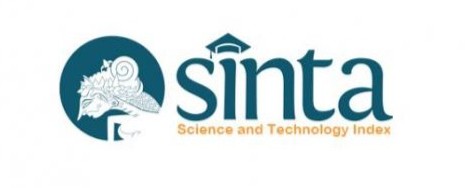Between Black and White
Analysis of Meaning Instability in the Film Maleficent
Downloads
This study examines the instability of meaning in the film Maleficent by deconstructing the conventional binary between good and evil commonly found in classic fairy tales. Rather than reinforcing moral absolutes, Maleficent challenges them by presenting a complex protagonist whose identity evolves from victim to villain to redeemer. Using Jacques Derrida’s theory of deconstruction and a qualitative-descriptive method, this research analyzes how narrative structure, symbolism, and character development disrupt fixed moral categories. The findings reveal that the film does not simply invert traditional roles but destabilizes the very foundations of moral storytelling. Meaning is portrayed as fluid, relational, and continuously shifting, emphasizing that identity and ethics in popular narratives are not fixed but open to reinterpretation.
Andini, R. D. (2023). Anxiety and self-defense mechanism of the characters in Maleficent movie. MEDIOVA: Journal of Islamic Media Studies, 3(1), 102–123.
Derrida, J. (1978). Writing and Difference. University of Chicago Press.
Diani, A., Lestari, M. T., & Maulana, S. (2023). Representasi feminisme dalam film Maleficent.
Fadiyah, L., Wulandari, L., Pujimahanani, C., & Pasopati, R. (2023). The emprises of Gaia hypothesis as shown on the film Maleficent. Jurnal Multidisiplin Dehasen (MUDE), 2(2), 215–224.
Mulya, S., & Mahmud, M. (2023). Speech style in Maleficent movie. ELITERATE: Journal of English Linguistics and Literature Studies, 3(1), 38–50.
Nurhadianty, R., Habsah, S., & Suprapto, D. (2023). An overlooked potential of a fantasy film to hone critical gender literacy. English Journal, 17(2), 71–78.
Putri, A. F., & Nafisah, N. (2022). An analysis of feminism in Maleficent: Mistress of Evil (2019). Atlantis Press Conference Proceedings of ICOLLITE 2023, 832, 1–6.
Raheemah, T. A., & Alhelal, A. R. (n.d.). The voice of the forest: an ecocritical and anthropocene perspective on nature, power, and human impact in maleficent. International Journal of Education Humanities and Social Science. https://doi.org/10.54922/ijehss.2024.0821
Shahid, A., & Sayyid, A. (2024). Unveiling corporeal feminism: Deconstructing female villain archetypes in Maleficent. Pakistan Languages and Humanities Review, 8(1), 386–394
Wendranirsa, T. S. (2017). Magic as a form of oppression towards women: gender ideology in maleficent (2014). 5(1), 68–78. https://doi.org/10.17510/PARADIGMA.V5I1.165
Widyahening, C. E. T., & Wardhani, N. E. (2021). Deconstruction of maleficent characters in the movie titled ’maleficent’.Linguistics and Culture Review,5(S3), 1453-1467. https://doi.org/10.21744/lingcure.v5nS3.1681
Yani, P. Y., & Ningsih, A. M. (2023). The betrayal in the film Maleficent by Robert Stromberg: Feminism approach. PJELL, 5(1), 94–105.
(Anon). (2021). Deconstruction of Maleficent characters in the movie titled 'Maleficent'. Linguistics and Culture Review, 5(S3), 1453–1467.

LAKON by Unair is licensed under a Creative Commons Attribution-NonCommercial-ShareAlike 4.0 International License.
1. The journal allows the author to hold the copyright of the article without restrictions.
2. The journal allows the author(s) to retain publishing rights without restrictions
3. The legal formal aspect of journal publication accessibility refers to Creative Commons Attribution-NonCommercial-ShareAlike (CC BY-NC-SA).


.png)













